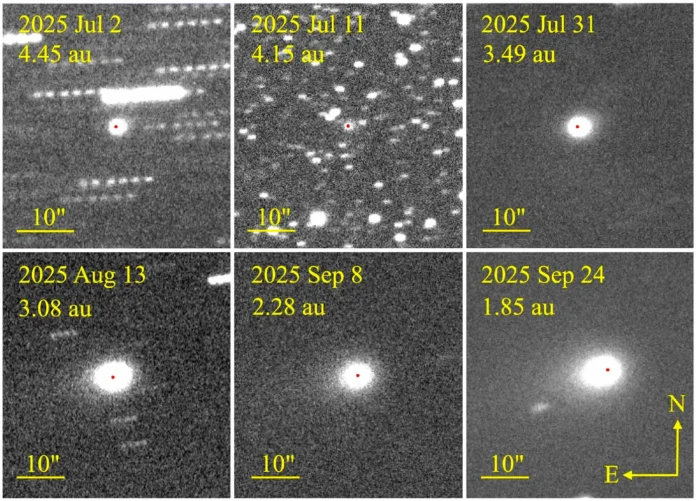
Key Developments
USA HERALD – The Manhattan-sized interstellar visitor 3I/ATLAS has transitioned from displaying an unusual anti-tail to exhibiting a conventional cometary tail, a shift that Harvard astrophysicist Avi Loeb argues could indicate controlled maneuvering by an alien spacecraft.
New images captured by Spain’s Nordic Optical Telescope in September show material streaming behind the 33-billion-ton object as it approaches the sun and absorbs up to 33 gigawatts of solar radiation.
The International Asteroid Warning Network added 3I/ATLAS to its monitoring list this week, describing it as presenting “a great opportunity” for observation due to its prolonged visibility and high scientific interest, while emphasizing the object poses no threat to Earth.
The interstellar object first appeared in our solar system in July and later began exhibiting what scientists identified as an anti-tail, an uncommon plume directed toward the sun rather than away from it.
According to Loeb’s recent paper, this anti-tail consisted primarily of carbon dioxide and water vapor, but also contained trace amounts of cyanide and a nickel alloy that has never been observed in nature and exists only in human manufacturing processes. The presence of this synthetic material has become a focal point in discussions about the object’s possible artificial origin.


